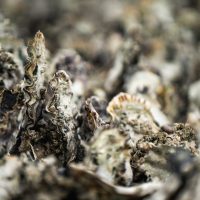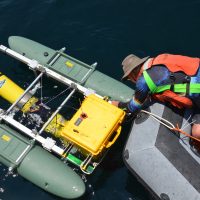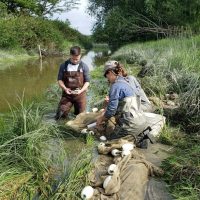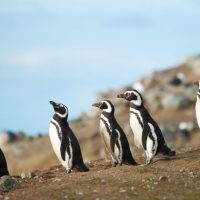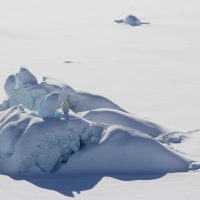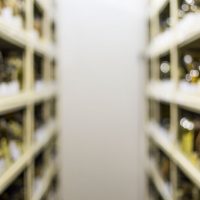Filter Results
Shifting ocean closures best way to protect animals from accidental catch
Many nations are calling for protection of 30% of the world’s oceans by 2030 from some or all types of exploitation, including fishing. Building off this proposal, a new analysis led by the University of Washington looks at how effective fishing closures are at reducing accidental catch. Researchers found that permanent marine protected areas are a relatively inefficient way to protect marine biodiversity that is accidentally caught in fisheries. Dynamic ocean management — changing the pattern of closures as accidental catch hotspots shift — is much more effective.
Read moreExploring the social and economic impacts of MSC certification
Professor Chris Anderson’s new research published in Frontiers in Marine Science explores the different social and economic impacts and pathways through which the MSC Certification Program can lead to sustainable outcomes for our oceans.
Read moreDo Hatchery Salmon Influence The Migration Of Wild Salmon?
“We’re basically asking if wild fish feel ‘peer pressure’ from hatchery fish to migrate,” said Dr. Berdahl. “Hatchery production is common throughout the Pacific Northwest, so the findings could improve salmon conservation broadly.”
Read morePadilla-Gamiño Lab partners with NOAA NWFSC and local shellfish growers to examine impacts of stressors on oysters
Jacqueline Padilla-Gamiño, along with researchers from NOAA’s Northwest Fisheries Science Center and Baywater Shellfish Farms, will examine the impacts of stressors on shellfish as part of a new project funded by the NOAA Sea Grant and the Ocean Acidification Program.
Read more about the other projects fundedJacqueline Padilla-Gamiño Receives National Science Foundation CAREER Award
SAFS Assistant Professor Jacqueline Padilla-Gamiño was recently named the recipient of a National Science Foundation (NSF) CAREER award. This prestigious award will support Padilla-Gamiño’s research to explore how changing oceans and plastic pollution will impact coral reef ecosystems; it will also support continued education and outreach initiatives with citizens, teachers and grade school students in Hawaii.
Read moreGlider in the Gulf
In July, Professor John Horne eagerly returned to the field after more than a year of pandemic related delays. As part of a multi-institutional science team, John set sail aboard the R/V Point Sur from Gulfport, Mississippi, testing new technologies to study deeper waters of the Gulf of Mexico in more detail. This voyage was also the first opportunity for John and his team to deploy the new glider technology they have been developing.
Read moreCapstone Highlight: Salmon Migrations on the Stillaguamish River
Capstone research projects provide an exciting opportunity for students to put classroom learning into practice. These senior projects are the culmination of the undergraduate experience here at SAFS. Josef Mayor’s (BS 2021) capstone project focused on Chinook salmon in the Stillaguamish River and how stream flow impacts salmon eggs as well as the timing of juvenile migrations. He plans to continue to work with his advisor Tom Quinn and publish the study before returning for graduate school.
Read moreModel reveals new details about the relationship between seabirds and forage fish fisheries
Forage fish, like anchovies and sardines, are a dietary staple for seabirds. Around the globe, seabirds have adapted in order to cope with natural changes in the availability of these prey fish. However, increased fishing pressure on these forage species is thought to be altering this predator-prey relationship in an adverse way for seabird populations. The natural ability of seabirds to cope with changes in prey abundance makes it difficult for researchers to determine if they are responding to natural processes or to human fishing practices.
Read moreLast ice-covered parts of summertime Arctic Ocean vulnerable to climate change
The region north of Greenland and the Canadian Arctic has been termed the Last Ice Area, where sea ice will remain the longest in summertime, providing a refuge for ice-dependent Arctic species. But conditions last summer show that parts of this region are already experiencing less summer ice due to climate change.
Read moreSpecimens by the Millions: Managing Large, Specialized Collections at the University of Washington Burke Museum Fish Collection
A new paper by Katherine Pearson Maslenikov published in Ichthyology and Herpetology outlines the history of the UW Fish Collection and its long partnership with NOAA and other state and federal agencies.
Read more


